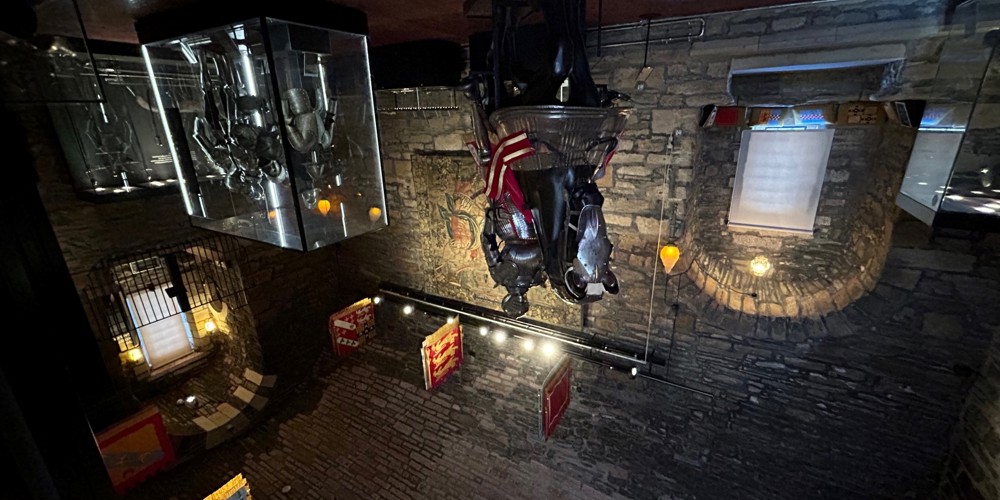The Great Hall
Great Halls are normally thought to be rooms solely for feasting but in reality, they were the main room in many castles and were used for a number of activities – from entertaining to dispensing justice. Many of these rooms would also at one time been painted or whitewashed and hung with rich tapestries similar to the ones that hang in the Great Hall today,
During a feast there would have been a huge table, possibly 2, running down the centre of the room with a smaller table raised on a dias positioned at the fireplace so that the Lord and Lady (and any special guests) would have their backs to the fire. The most important guest would sit alongside the Lord and Lady on the dias and be made ‘Lord of the Feast’. Most inhabitants and party guests would sleep where they feasted, on rushes which would have been spread across the floor.
During feasts and celebrations, minstrels would entertain the Lord, Lady and their guests. The Minstrels’ Gallery overlooks the Great Hall and dates from about 1350, Entertainment was an important part of any celebrations and travelling musicians playing music, telling stories and reciting poetry would be a normal part of social gatherings.
Storytelling was not just a popular form of entertainment. It was also the Medieval equivalent of a TV news channel. Since most peasants never left their villages, storytellers were the best way people had of finding out what was happening in the world around them. If a king died or got married, or if their country went to war, chances are, peasants would learn all about it only when a storyteller came to their village. Storytellers have also been credited with helping keep folklore, myths and legends alive.
Some of these travelling musicians became so popular that their work is still remembered today. One such man was “Blind Harry”. Much of what we know today about the Scottish hero, William Wallace, was written by Blind Harry 175 years after the events of his life . His epic poem, “The Wallace”, is a mixture of fact, fiction and folklore.

